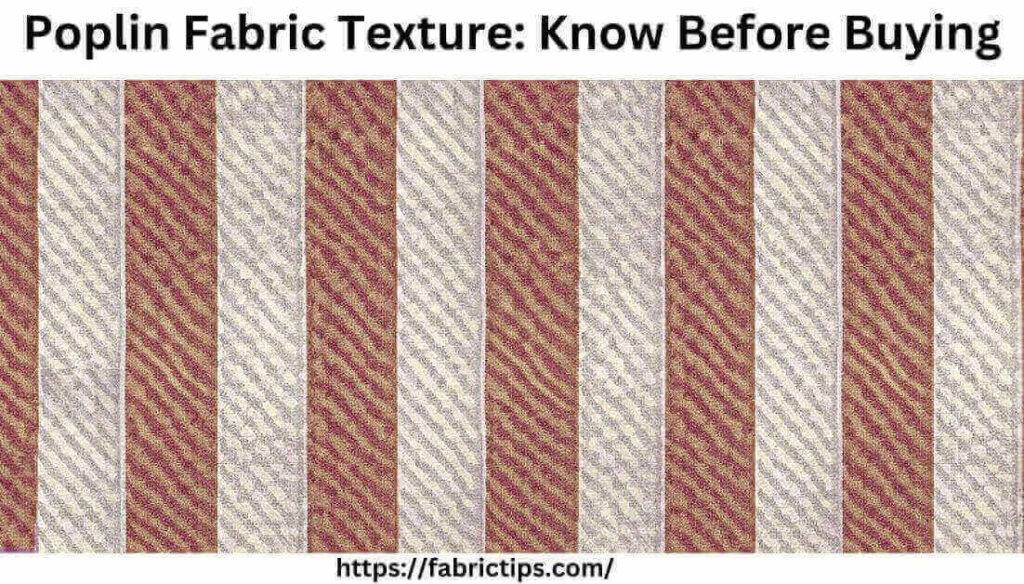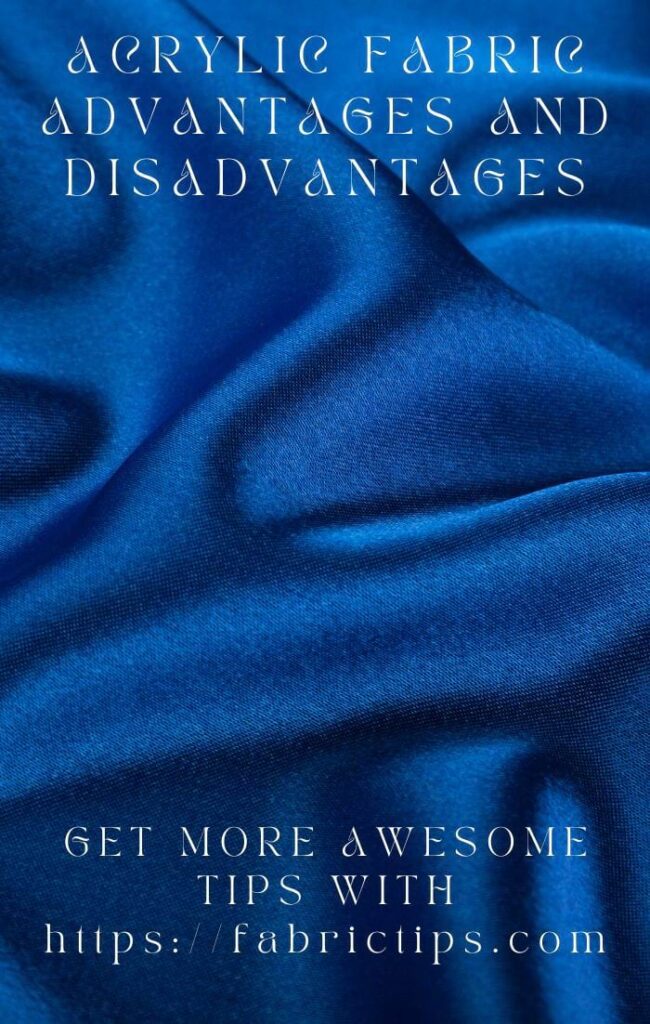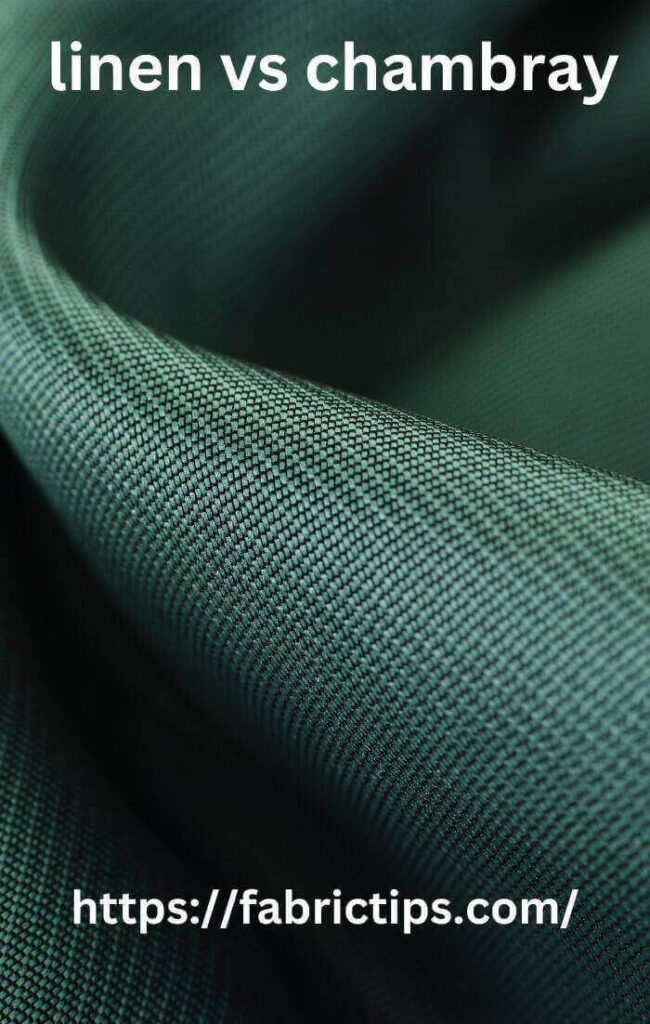Last Updated on December 13, 2025 by Wahid
Whether it be rayon, crepe, spandex, or broadcloth, there is a wide variety of fabrics available, each with a unique history & characteristics. In poplin, the weave is tight, resulting in a luxurious material.
Poplin fabric is lightweight and plain-woven. In addition to home décor, it’s an excellent choice for formal & casual wear. A ribbed effect is achieved by alternating coarse cross-grain threads with fine parallel-grain lines. A tabinet is a fabric made from 100% cotton, synthetic fibers, or a combination of both.
Fabrics with this finish are popular due to their durability & subtle luster. In addition to these qualities, your wardrobe can look extra luxurious. By reading this article, you’ll discover why poplin fabric is so popular & why this guide is all you need.
Poplin Fabric: What Is It?

- Fabric woven in a plain weave is called poplin because it has a simple cross-over pattern. Satin and twill use more complex textured weaves.
- The poplin fabric, also called a “tabinet fabric,” is tightly woven with a fine warp yarn and a coarser weft yarn.
- Materials for poplin include cotton blends, cotton fabric, silk poplin, polyester blends, polyester poplin, and lycra stretch poplin.
- Strong, durable, yet soft and lustrous, it is hardly surprising that it enjoys such popularity. As a solid, all-purpose fabric, it can’t really go wrong.
Origin Of Poplin

- Traditional “poplin” fabrics were made in Avignon, France, with silk warps and wool wefts in the 15th century.
- Now, poplin is available in a wide range of materials, such as cotton, polyester, silk, and lycra.
- Fabrics made with poplin are made from warp yarns that are coarser and weft yarns that are finer.
- During the 15th century, we saw poplin being used for winter clothing made from wool and silk. In fact, ‘poplin’ actually derives from the word ‘papelaine,’ named after the fabled papal city of Avignon.
- In the past, the fabric was considered commonplace, even though it was woven from natural silk.
- The sisters in Louisa May’s “Little Women” regret wearing poplin dresses to a ball rather than pure silk dresses.
5 Best Characteristics Of Poplin
- Smooth & Even Feel
Poplin’s fabric’s plain, tight weave makes it smooth to the touch, unlike knits, which may feel bumpy and ribbed.
- Lightweight
Shirts made from poplin are thin & lightweight, making them ideal for summer. However, it is also transparent, which often requires lining.
- Durable
Despite its strength, poplin can withstand washing machines and heavy wear. Aside from keeping its shape quite well, it also resists wrinkles. Thus it is frequently used to make tablecloths, upholstery fabric, & quilting.
- Inexpensive
It is inexpensive to produce poplin, making it affordable and plain fabric for t-shirts. Because poplin is made from various materials, it comes at different price points. Silk poplin is usually the most expensive, and polyester poplin is the cheapest.
- Prints & Dyes Easily
The poplin fabric holds dyes & prints well, which makes it suitable for clothing in different patterns and colors.
Uses Of Poplin
There are many uses for poplin fabric, including:
Shirting
This fabric is very common in shirts, such as casual blouses and formal button-up shirts. In cooler climates, silk poplin shirt is extremely popular; warmer climates favor cotton poplin as the norm.
Airy, Lightweight Clothing
In addition to airy pants and lightweight tops, poplin makes excellent summer wear.
Women’s Dresses
Since poplin dresses have a light & airy drape, they’ll appear very flowy and perfect for summer.
Pajamas & Sleepwear
Because poplin is comfortable and smooth to wear, it’s perfect for loungewear such as pajamas.
What Is Polyester Poplin?

- There are two types of polyester poplin: polyester, which is 100% polyester, and polyester, which is blended with wool or cotton.
- Poplins made of cotton have a silkier texture, giving them a luxurious feel.
- Polyester fabric offers the usual properties of crease-resistant, shrink-resistant, and lightweight materials.
- 100% polyester poplin works well for items that require drape or a lot of movement, such as flags & blouses.
- Heavy garments, such as uniforms, benefit from the poly-cotton version.
- Hospital scrubs are made of polycotton poplin because they can be washed regularly.
- It is generally cheaper to buy polyester fabrics than cotton or silk fabrics.
- Bringing the look of a more expensive fabric to those who want a budget-friendly alternative.
Silk-Wool Poplin: What Is It?

France was the first country to produce silk wool poplin fabric in the 15th century. Besides silk, it also contains wool fibers. This fabric has a two-layer effect. The warp threads were likely woven from silk yarn. Thick, coarser weft threads were made of wool.
- Fabrics made from wool and silk have a 2-layer appearance.
- As well as providing stability, silk fibers have a smooth, ridged surface.
- Warmer weather would have been made possible by the wool content.
- In addition to adding luxury and softness, silk would have enhanced the garment.
- The modern poplin is a mixture of synthetic and manmade materials.
- Despite its silky feel, it is much lighter and no longer has any insulating properties.
Poplin Fabric: How Does It Sew?

- The poplin material is very simple to work with.
- Although thin, it is smooth on the surface and maintains its shape well.
- Even though it can be quite slippery, it can still be stiffened up beforehand.
- Poplin is also a popular embroidered fabric because of its weave & forgiving nature.
- With poplin, you can easily create beautiful & long-lasting projects.
Advantages Poplin Fabric
- Strong And Durable
- Cool, lightweight
- Touchable softness
- Versatile
- Subtle sheen
- Lustrous face
- Printed on a delight
- Comfortable
- Easily stain-resistant
- Doesn’t wrinkle easily
- Water-resistant
Disadvantages Poplin Fabric
- Not heat-sealed
- Winter-proof but too thin
Print On Poplin Fabric
- Poplin fabric printing is now easier than ever.
- You can upload any design, pattern, image, or any combination of those into many designs and position it wherever you want.
- The pattern can even be repeated or increased using different online design tools.
- Make sure it works for you by ordering a trial print, and save on your 1st fabric purchase, too.
Poplin Vs Twill

- Even though poplin and twill are often confused, they are woven differently.
- The plain-weave fabric twill is similar to poplin, but poplin uses a thinner warp yarn compared to the weft yarn.
- Although both materials are sturdy, poplin is usually softer compared to twill.
- Furthermore, poplin has better breathability.
Frequently Asked Questions
01. What does Poplin feel like?
Plain weave fabrics, such as poplin, feel smooth & even when you touch them. In addition to being lightweight, the fabric has an airy, light drape.
02. What is the texture of poplin?
In terms of characteristics, generally, poplin fabric is known for its smooth surface and tightly woven fabric. Fabrics made from poplin are plain weaves. The weave is simple over under (in contrast to fabrics like satin & twill).
03. Can poplin fabric be soft?
Lightweight poplin fabric is made from fine warp yarns and thick weave yarns. Polyester and cotton are popular combinations of fibers in poplin threads. In the end, this fabric is strong, soft, and perfect for summer clothing.
04. Cotton or poplin, which is thicker?
Cotton quilting fabric is thicker than poplin and medium in weight. Patchwork & quilting cotton is also referred to as craft cotton, which is different from the cotton used to make garments.
05. How are poplin and linen different?
It is a durable plain woven cloth ideal for tablecloths, choir robes, suits, and uniforms. You can wash it endlessly. Synthetic linen, such as linen derived from flax plants, can be used for clothing, suits, & sportswear. The fabric can be washed endlessly without damaging its shine or body.
06. Is Poplin formal or informal?
In general, poplin shirts feel smoothest due to their textureless nature, as well as being susceptible to wrinkles. Our poplin shirts are perfect for formal events, everyday business appearances, and ceremonies.
07. How is poplin different from 100% cotton?
Today, poplin consists primarily of 100% cotton, which ensures its light weight while still providing strength. In addition to wool, satin, silk, rayon, and poly blend fabrics, there is a similar concept; two yarns of varying thicknesses that are woven together.
08. Is poplin like flannel?
Yes, you can get plaid flannels, but many flannels are not plaid; instead, they’re striped or solid. Alternatively, plaids are made of oxford cloth, flannel, poplin, or any woven fabric. However, plaid patterns are common on flannel shirts.
09. Can you wear poplin shirts casually?
When it comes to poplin shirts, they are a great wardrobe staple that can be dressed up & down to suit the occasion. A great thing about poplin is that it strikes an ideal balance between casual and formal.
10. Poly cotton vs poplin: what’s the difference?
There is a major difference between one of them being poly (possibly polyester) opposed to the other being cotton. Differences in poplin lie in the way it is made as well as how the threads are handled and once the fabric is made.
Conclusion
Whether made from 100% cotton, a blend of cotton, and other fibers, poplin can be tailored into both fashion garments & utility wear.
In this article, hopefully, you now have a better understanding of poplin fabric texture and how impressive this fabric is. Comment below if you enjoyed this article & if it motivated you to experiment with poplin.


